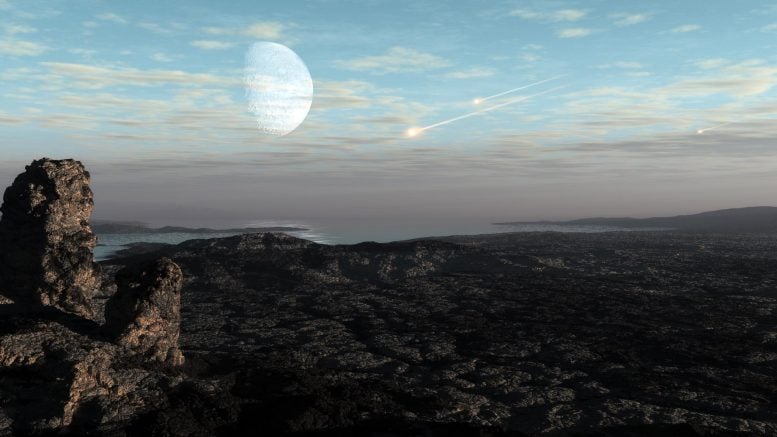
A Southwest Research Institute-led team updated planetary bombardment models with the latest geologic information and then applied those models to understand how impacts may have affected oxygen levels in the Earth’s atmosphere in the Archean eon, 2.5 to 4 billion years ago. This artistic conception illustrates large asteroids penetrating Earth’s oxygen-poor atmosphere. Credit: SwRI/Dan Durda, Simone Marchi
Study finds collisions that stalled oxygen growth on the planet are more common than thought.
Between 2.5 and 4 billion years ago, a time known as the Archean eon, Earth’s weather could often be described as cloudy with a chance of asteroid.
Back then, it was not uncommon for asteroids or comets to hit Earth. In fact, the largest ones, more than six miles wide, altered the chemistry of the planet’s earliest atmosphere. While this has all been generally accepted by the geologists, what hasn’t been as well understood is how often these large asteroids would hit and how exactly the fallout from the impacts affected the atmosphere, specifically oxygen levels. A team of researchers now believe they have some of the answers.
In a new study, Nadja Drabon, a Harvard assistant professor of Earth and planetary sciences, was part of a team that analyzed remnants of ancient asteroids and modeled the effects of their collisions to show that the strikes took place more often than previously thought and may have delayed when oxygen started accumulating on the planet. The new models can help scientists understand more precisely when the planet started its path toward becoming the Earth we know today.
“Free oxygen in the atmosphere is critical for any living being that uses respiration to produce energy,” Drabon said. “Without the accumulation of oxygen in the atmosphere we would probably not exist.”
A Southwest Research Institute-led team updated planetary bombardment models to understand how large impacts, such as the one illustrated here, may have affected oxygen levels in the Earth’s atmosphere in the Archean eon, 2.5 to 4 billion years ago. Credit: SwRI/Simone Marchi
The work is described in Nature Geoscience and was led by Simone Marchi, a scientist at the Southwest Research Institute in Boulder, Colorado.
The researchers found existing planetary bombardment models underestimate how frequent asteroids and comets would hit Earth. The new, higher collision rate suggest impactors hit the planet roughly every 15 million years, about 10 times higher than current models.
The scientists realized this after analyzing records of what appear to be ordinary bits of rock. They are actually ancient evidence, known as impact spherules, that formed in the fiery collisions each time large asteroids or comets struck the planet. As a result, the energy from the impact melted and vaporized the rocky materials in the Earth’s crust, shooting them up in a giant plume. Small droplets of molten rock in that cloud would then condense and solidify, falling back to Earth as sand-sized particles that would settle back onto the Earth’s crust. These ancient markers are hard to find since they form layers in the rock that are usually only about an inch or so.
“You basically just go on long hikes and you look at all the rocks you can find because the impact particles are so tiny,” Drabon said. “They’re really easily missed.”
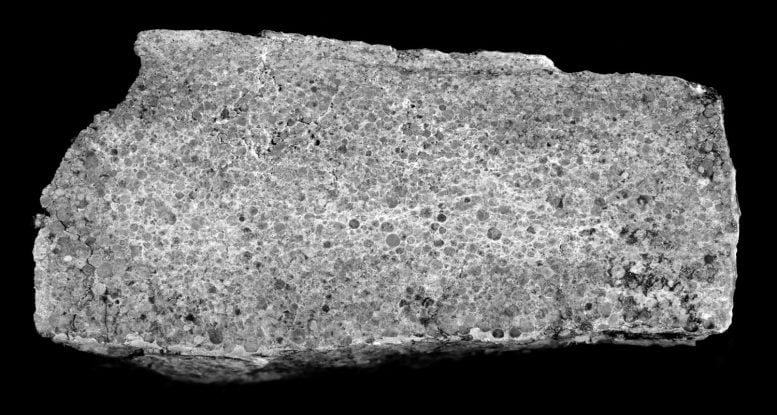
An SwRI-led study updated bombardment models based on small glassy particles, known as impact spherules, that populate multiple thin, discrete layers in the Earth’s crust, ranging in age from about 2.4 to 3.5 billion years old. Spherule layers — such as the one shown in this 5-centimeter, 2.6-billion-year-old sample from Australia — are markers of ancient collisions. Credit: Courtesy of UCLA/Scott Hassler and Oberlin/Bruce Simonson
Scientists, like Drabon, however, have caught breaks. “Over the last couple of years, evidence for a number of additional impacts have been found that hadn’t been recognized before,” she said.
These new spherule layers increased the total number of known impact events during the early Earth. This allowed the Southwest Research Institute team to update their bombardment models to find the collision rate had been underestimated.
Researchers then modeled how all these impacts would have influenced the atmosphere. They essentially found that the accumulated effects of meteorite impacts by objects larger than six miles probably created an oxygen sink that sucked most of the oxygen out of the atmosphere.
The findings align with the geological record, which shows that oxygen levels in the atmosphere varied but stayed relatively low in the early Archean eon. This was the case until around 2.4 billion years ago, during the tail end of this time period when the bombardment slowed down. The Earth then went through a major shift in surface chemistry triggered by the rise of oxygen levels known as the Great Oxidation Event.
“As time went on, collisions become progressively less frequent and too small to be able to significantly alter post-GOE oxygen levels,” Marchi said in a statement. “The Earth was on its course to become the current planet.”
Drabon said next steps in the project include putting their modeling work to the test to see what they can model in the rocks themselves.
“Can we actually trace in the rock record how the oxygen was sucked out of the atmosphere?” Drabon wondered.
Reference: “Delayed and variable late Archaean atmospheric oxidation due to high collision rates on Earth” by S. Marchi, N. Drabon, T. Schulz, L. Schaefer, D. Nesvorny, W. F. Bottke, C. Koeberl and T. Lyons, 21 October 2021, Nature Geoscience.
DOI: 10.1038/s41561-021-00835-9

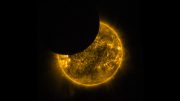

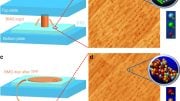

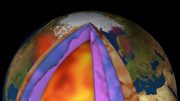



3,500,000,000 2,400,000,000
new spherule layers increased the total number of known impacts during the early earth
over 1,100,000,000 years every 15,000,000 an impact 66 occured
11,100,000,000 anno universo = 2,600,000,000 1,130,000,000 annual years ago australia western australia yarrabubba 30 kilometre impact crater 27 10 s 118 50 e see 2,229,000,000 annual years ago
2,600,000,000
impact layer australia
+ additional layers
as previously requested and no answer given im still waiting for the evidence
between 3,500,000,000 and 2,500,000,000 u have what evidence that x amount of impacts occurred
is this number 10 20 0r 30
but if you say one every 15,000,000 for one billion years
that implies 66 occurred during this time frame
so you have a record of 6 impact sites
where ARE THEY LOCATED on the earth surface
AND WHERE IS THE EVIDENCE FOR GLASS SPHERULES IN THE OTHER 66 LOCATIONS and give us their locations
2 known the one above and the one inj your picture above in the article
where are the rest of the 64
I don’t know of any “requests” or why you are “waiting” instead of reading the paper.
But FWIW, see their figure 2 for the key points:
“Fig. 2 | Earth’s collisional history and Archaean spherule layers. a, Mass accreted in bins of 25 Myr. Simulations in green deliver a total mass (integral of each curve) within the range allowed by highly siderophile elements (0.1–2.0% Earth’s mass13). Superposed blue density plot indicates the mass accreted by Earth (darker blue is more likely), as reconstructed from the most likely spherule-layer data. b, Nominal impactor SFD derived from spherule layers (green curve). Yellow area spans Monte Carlo-based retrieval of the impactor SFD from spherule layers, including uncertainties. Red curves indicate a sample of Monte Carlo collisional history SFDs for the periods 2.4–2.7 and 3.2–3.5 Ga corresponding to known spherule layers. Arrows indicate the shifts between observations and models, as discussed in the text.”
There is no problem there, the problem that they identify is limited to the “current 3.5–2.5 Ga impact models and the geological record”. But see my own response to the article how they solve that.
Nitpick: Please don’t use shout capitals for emphasis, it looks terrible. You can test _underlining_ or *asterisking*.
“They essentially found that the accumulated effects of meteorite impacts by objects larger than six miles probably created an oxygen sink that sucked most of the oxygen out of the atmosphere.”
Wait.. That’s at odds with the GOE. All of the oxygen from the cyanobacteria had already been stored as hematite by the oxidation of ferrous iron in the Archean ocean. They can’t suck out what was already sucked out. Maybe they don’t realize that?
The pre-GOE conditions or even the other oxygen removal mmechanisms was not their concern, see the article.
“The findings align with the geological record, which shows that oxygen levels in the atmosphere varied but stayed relatively low in the early Archean eon. This was the case until around 2.4 billion years ago, during the tail end of this time period when the bombardment slowed down. The Earth then went through a major shift in surface chemistry triggered by the rise of oxygen levels known as the Great Oxidation Event.
“As time went on, collisions become progressively less frequent and too small to be able to significantly alter post-GOE oxygen levels,” Marchi said in a statement. “The Earth was on its course to become the current planet.”
Drabon said next steps in the project include putting their modeling work to the test to see what they can model in the rocks themselves.
“Can we actually trace in the rock record how the oxygen was sucked out of the atmosphere?” Drabon wondered.”
So, consistent with, not at odds with, the GOE.
“mmechanisms was” := mechanisms were.
Interestingly the higher extended rate derives from using the latest results where an early instability is favored over the decade old “late bombardment” model. Turns out a “leaky” belt model is needed:
“The resulting impact flux explains the number of N1 lunar craters recorded on 3.9–3.5Ga terrains but falls short for ages 3.5–3.2Ga. This discrepancy is because the dynamical models neglected non-gravitational forces, such as the Yarkovsky effect (for example, ref. 9), which produce a steady-state population of small asteroids that slowly leave the main belt. To take into account these effects, the lunar impact flux was increased by adding a time-constant rate of crater formation …”
And a plus is that they therefore use small craters for calibration.
“You only have to take a look at the Moon to see that it’s had something of a rough time during its roughly 4.5-billion-year history, but a new study suggests that it’s survived more early asteroid hits than its surface actually shows today.
The new research proposes that some of the oldest impacts on the Moon left near-invisible imprints because they were striking a softer surface: The global ocean of magma that covered the Moon in its youth before it cooled and solidified.
These relatively soft landings, leaving next to no permanent trace of ever having happened, could explain why the Moon as it currently looks doesn’t match up with what scientists think happened to it in the first billion years or so.”
[ https://www.sciencealert.com/the-moon-might-have-taken-more-early-asteroid-hits-than-previously-thought ]